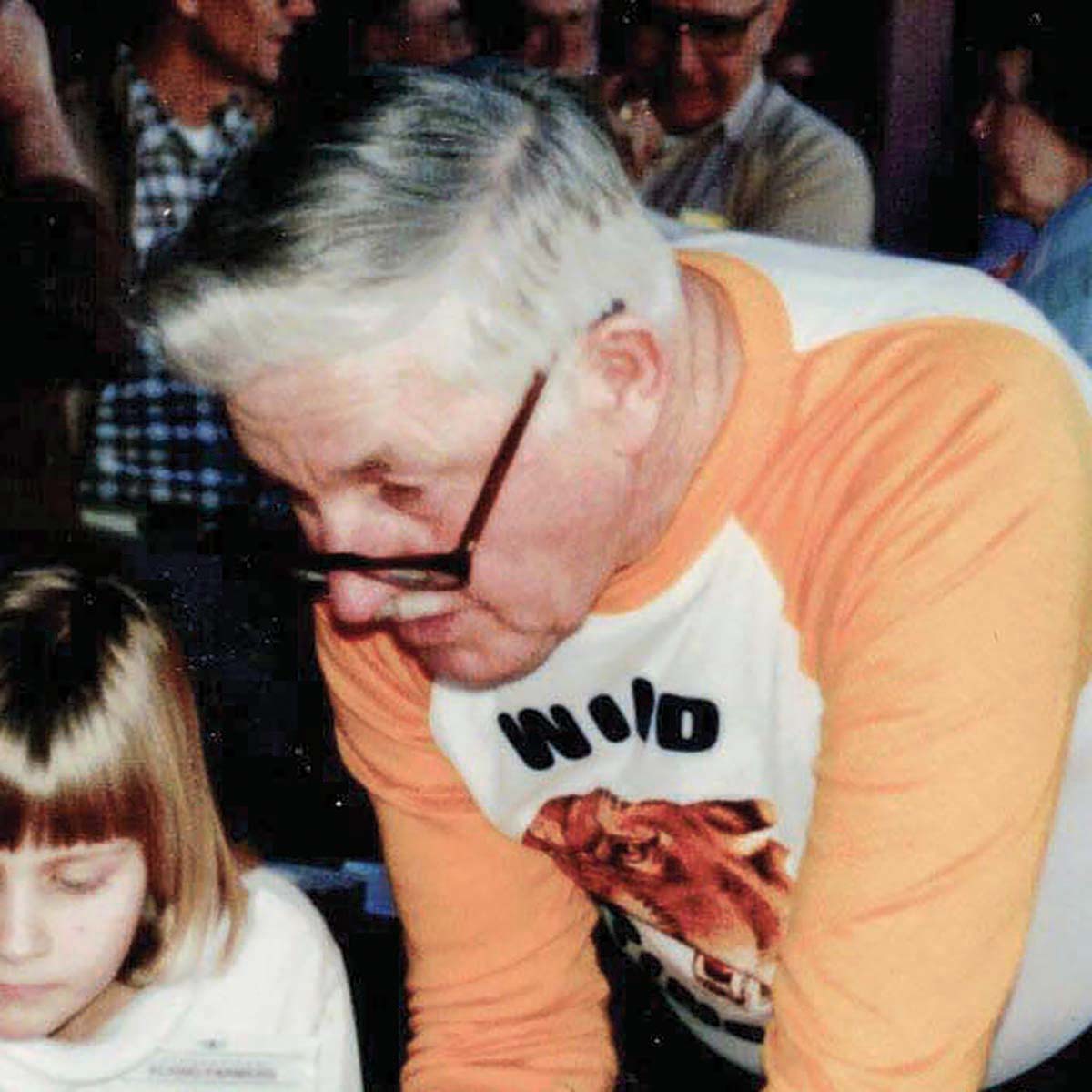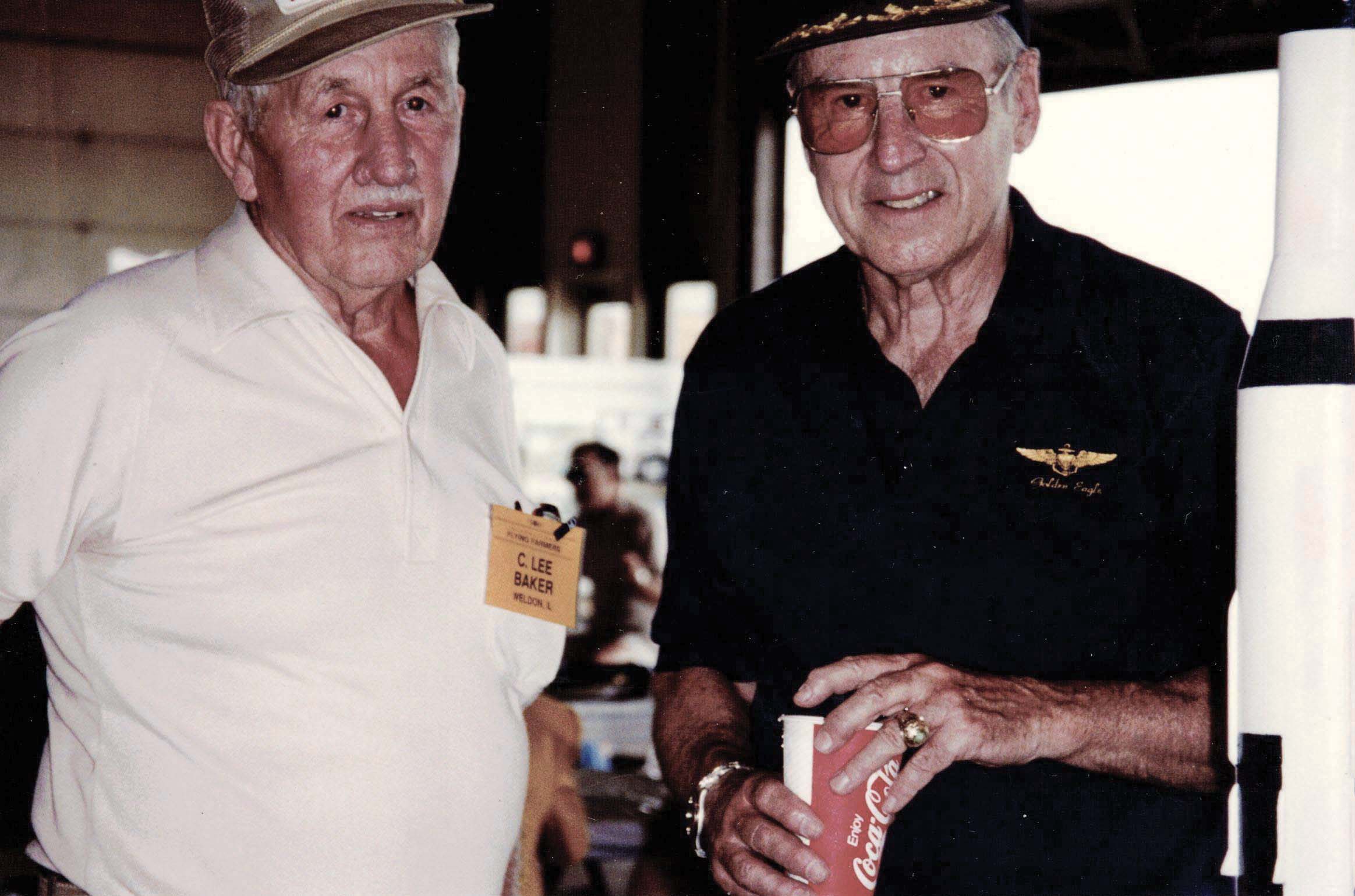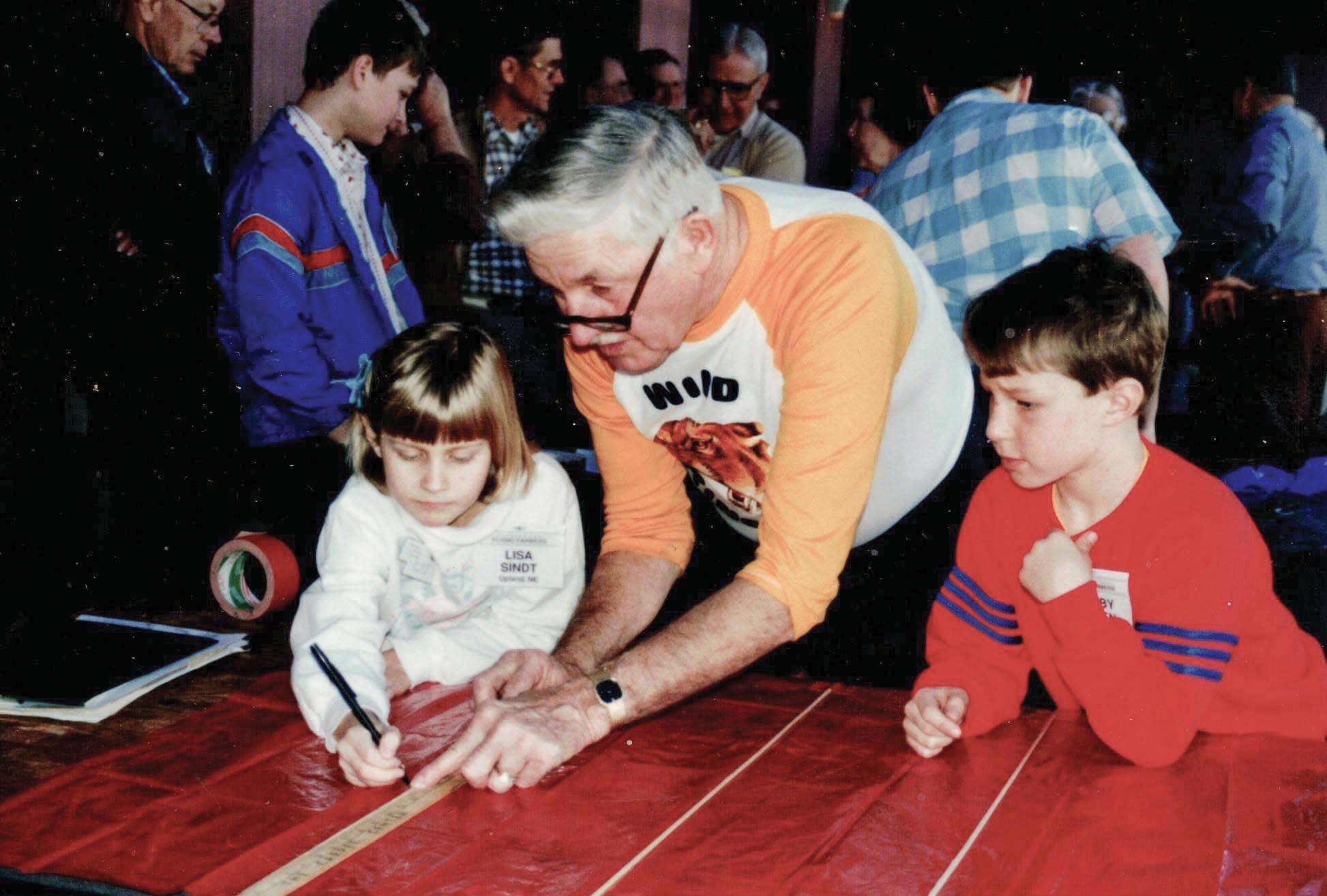Lee Baker – Flying Farmer

Lee Baker’s occupation was farming but his passion was his work as “ambassador of Illinois aviation.”
Baker grew up near Weldon where his love of flying was kindled by the kites he launched over the family farm.
In a handwritten account of his early connection to aviation, Baker recalled his childhood on the farm “watching birds fly and glide and too-heavy chickens trying to make it over the chicken yard fence, seeds from maple trees windmilling down to the ground, my thoughts always return to why not someday
I could fly.”
At age 7, Baker was driving a team of horses behind a three-section harrow when he first heard and then saw an airplane, an unlikely sight over the prairie. The silver and white aircraft turned out to be an airmail plane piloted by Charles Lindbergh, on route from St. Louis to Chicago.
“That was a day for me to remember,” Baker wrote in his memoir.
After high school, he went to Chanute Air Force base in Rantoul with his heart set on becoming a pilot. Those plans were derailed after his parents refused to sign the required paperwork. Baker’s father wanted to retire and pass the farm on to his son.
In 1941, Baker was drafted into the U.S. Army. He served in the 3rd Armored Division of General George Patton’s 3rd Army. Baker’s wife Charlene accompanied him, working as a secretary at military headquarters wherever Baker was serving. He served four years before returning to Illinois and a job at a manufacturing plant in Decatur that turned out parts for the atomic bomb.


Determined to become a pilot, Baker tapped his GI benefits to pay for flying lessons and earned his pilot’s certification in 1947. He returned to the family farm and joined the Flying Farmers, a group of aviators who used airplanes in their farming operations. The Bakers flew around the country for Flying Farmers conventions and hosted “fly-ins” at their farm.
Baker’s daughter, Suzan Schlessinger, and her brother Jim made some of the trips with their parents in the 1947 Stinson 108-2.
“I would get in the back seat and fall asleep. Dad would say, ‘you’re missing the view,’” she recalled.
Baker’s business card lists his special interests as “ambassador of Illinois aviation.”
On the card, space education and classroom instruction, top the list, followed by kite or rocket composites and demonstrations. He also was known for airplanes fashioned from pop cans. The metal planes were flown by kites and Baker-made rockets for demonstrations.
As a member of the CH Moore Homestead and DeWitt County Museum, Baker helped local kids build and fly kites made from garbage bags, duct tape and wooden dowels.
Apollo 13 astronaut Jim Lovell signed Baker’s 54-inch Saturn V5 rocket model at a Wings Program held at College Colorado Airport. The two got to know each other during the annual event and the well-know astronaut appreciated Baker’s devotion to aviation.
During one conversation, Baker asked the astronaut for his opinion on when the U.S. would return to the moon.
“About the same time it took us to get there –10 years– but we will be there again,” Lovell told Baker, according to the DeWitt County aviator’s memoir.
After the death of Charlene, Baker married Harriett Raker and the two enjoyed taking shorter flights close to home. For their tenth wedding anniversary, the Bakers chartered a DC-3 from the Prairie Aviation Museum for a flight over the family farm, with 14 family members on board.
In 1995, Baker was inducted into the Illinois Aviation Hall of Fame for his work as an aviation ambassador. He expressed gratitude in his later years for his work as a farmer and the good times he shared with family and friends, “and all will remember I walked among them, always looking up.”
Recent Comments